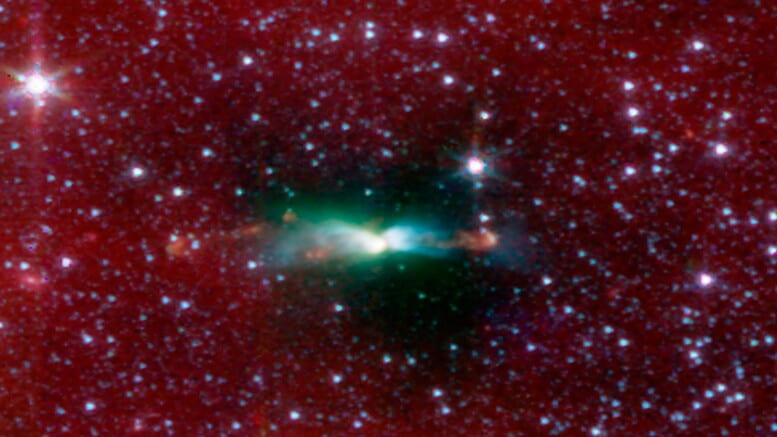New findings from a team of Northwestern University astrophysicists provide insight into binary star formation and how magnetic fields influence the earliest stages of developing stars. Using NASA’s Stratospheric Observatory for Infrared Astronomy (SOFIA), the researchers were able to take a closer look at L483, a star forming cloud in deep space. They noticed the cloud’s magnetic field was twisted and that a newborn star was tucked behind it.
The study was led by Erin Cox, a postdoctoral associate at Northwestern’s Center for Interdisciplinary Exploration and Research in Astrophysics (CIERA). According to Cox, this new work could provide new insights into how binary stars — and the planets that orbit them — form. Cox presented the research at the 240th meeting of the American Astronomical Society in Pasadena, California. The study was also published in The Astrophysical Journal.
“Learning how binary stars form is exciting because planet and star formation take place at the same time, and binary stars dynamically interact with each other,” Cox said. “In our census of exoplanets, we know planets exist around these double stars, but we don’t know much about how these planets differ from the ones that live around isolated stars. With new instruments coming online to discover and probe new binary systems, we will be able to test these results with a statistical sample.”
Learn more about the findings in Northwestern Now’s story “Wandering star disrupts stellar nursery.”

